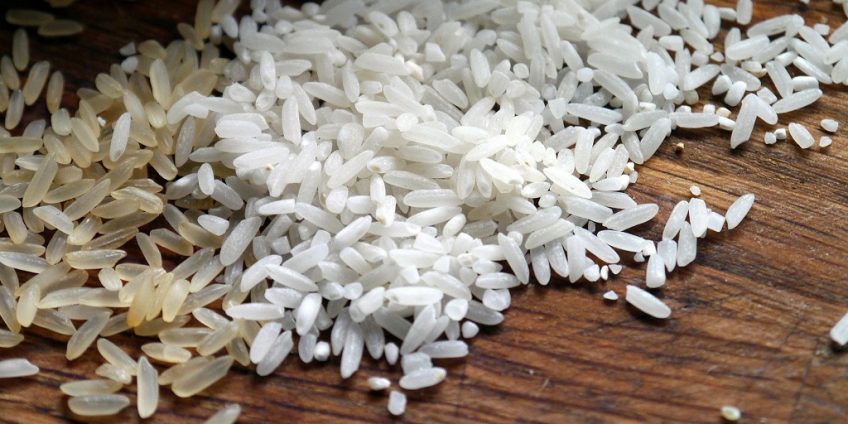Scroll to Recipes with Rice / चावल as ingredient
Rice is the seed of this grass and is a cereal grain. It is grown as an annual plant and comes third in worldwide production, after sugarcane and maize. Oryza sativa (Asian-rice) or Oryza glaberrima (African-rice) is a species of grass.
Growing this is labor-intensive and also requires an ample amount of water for it to grow. Hence, it is grown in regions that have high rainfall and are also low labor costs. White, Black, Jasmine, Brown, Red cargo, Parboiled are some of the rice types. Every type of rice is possessing different health benefits.
Asian countries are significant producers of this grain. The three largest producers of it are Thailand, Vietnam, and China.
Commonly Known as
| Language | Name | Written as |
|---|---|---|
| Arabic | Orz | أرز |
| Bengali | Bhāta | ভাত |
| Gujarati | Bhāta | ભાત |
| Hindi | chaaval | चावल |
| Kannada | Akki | ಅಕ್ಕಿ |
| Malayalam | Ari | അരി |
| Marathi | Tāndūḷa | तांदूळ |
| Punjabi | chaula | ਚੌਲ |
| Tamil | Arici | அரிசி |
| Telugu | Biyyaṁ | బియ్యం |
| Urdu | chaaval | چاول |
Nutritional Profile of Rice
Nutritional profile per 100 gms
- Calories: 365
- Protein: 7g
- Carbohydrate: 80g
- Fiber: 1.3g
- Fat: 700mg
- Sodium: 5mg
- Potassium: 115mg
Source: USDA & Google
Benefits of Rice
Provides Energy
Carbohydrates provide a good amount of energy for the proper functioning of our body. Rice has an abundance of carbohydrates in it. Besides, the vitamins and minerals present in it help increase the organs’ functioning in our body and is a great food to provide us energy.
Control Blood Pressure
One of the reasons for causing high blood pressure is more sodium in our system. It increases the stress on the cardiovascular system as the veins are constricted due to the substance. As a result, it increases our blood pressure.
Since rice is low in sodium, it is one of the best food for people suffering from blood pressure problems.
Prevent Cancer
As per researchers, insoluble fiber is extremely helpful in preventing colorectal and intestinal cancer. They fight against the development of cancer cells and protects our body. It is rich with such insoluble fiber and hence is excellent for helping in preventing such cancers.
Anti-oxidant
It also contains antioxidants like vitamin C, vitamin-A, phenolic, and flavonoid compounds in reasonable amounts. These antioxidants help fight against free radicals in your system. Free radicals are hazardous and can also cause many chronic diseases. Thus, it is good to consume this grain to keep it safe from such free radicals.
Improves Metabolism
Rice consists of vitamins and minerals like niacin, vitamin D, calcium, fiber, iron, thiamine, and riboflavin in the right amounts. These improve the metabolism and increases the immune system health and functioning of our organs.
Prevents Alzheimer
The nutrients present in rice improves the functioning of the nervous system and neurotransmitters in our body. They inhibit free radicals and dangerous toxins that can cause diseases like dementia and Alzheimer’s.
Side Effects
In general, it is safe to eat them and does not have side effects. But overeating white rice can risk causing type 2 diabetes and obesity.
Frequently Asked Questions
Is it bad to eat rice every day?
No, it is not harmful to eat rice every day as it provides energy for your body. However, one should be careful as it can cause type 2 diabetes. So, it is advisable to have white-rice in a limited quantity if one wants to consume it daily.
Is white rice bad?
They are high in refined carbs, and their fibers are removed. A high volume of intake of refined items can lead to obesity and chronic diseases.
Is brown rice good or the white one?
Brown rice is more nutritious in comparison to its white counterpart. It contains more fiber, magnesium, and other nutrients than the white one.


